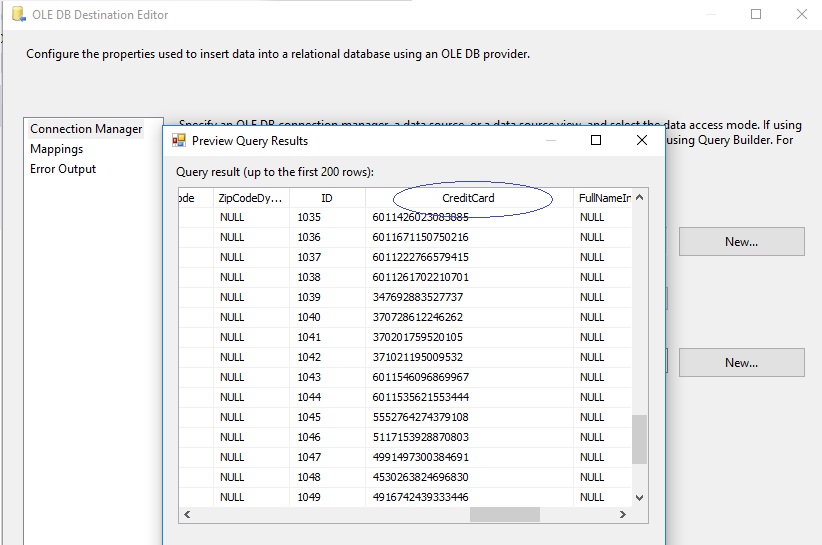e
q
u
e
s
t
a
d
e
m
o < back
Data Masking Components: Company Name
{TOC}
CreditCompany CardName Random
API Reference,
CLR Reference (links)
Usage Instructions:
Purpose
The purpose of the component is to randomly mask creditcompany cardnames values retaining card issuer as is and checksum last digit confirming towith the Luhnrealistic algorithm.but Fordifferent example, Visa card number will always transform into another Visa card number.data.
Algorithm
VariationSubstitution ofPreserving RandomReferential AlgorithmIntegrity
Description
  Company
Company |
API Reference, CLR Reference (links)
Usage Instructions:
| 1. Configure a source that contains the column with alphabetical and numeric characters. The data in the column may also include any other character that will be treated as a separator. |
 
|
|
2. Drag and Drop |
 
|
|
3. Now, the precedence constraint (the blue arrow) passes proper meta-data to the |
 
|
|
4. Now that the metadata for the |
 
|
|
5. In the second tab, there are input columns. Please check-mark only one column, the one that you will be masking with |
 
|
| 6. This will create an extra column with the prefix “Masked_”. |
 
|
| 7. Create a connection manager for the destination and configure source component for the destination. In the connection manager, in the tab “Mappings”, specify that you want newly created Field_Masked to be a field replacing the original value. For that, just click on the available input columns, choose the masked value, and map to the “Available Destination Columns” |
 
|
|
8. Now, all the configurations are complete for the valid values.
You can run the package with the |
 
|
Error Handling
| 9. If, however, there are invalid values in the package's source, one would need to configure error handling. Invalid values are those that are not conforming to the rules of the entity. To handle invalid values, each data masking component has error handling precedence constraint. One needs to create error destination connection and connect red arrow (error handling constraint) with this destination. As the connection is made, one needs to configure the state of failure: “Fail”,”Ignore” or “Redirect”. |
 
|
|
10. It is recommended that one re-directs the output into the error destination, so that later one be able to analyze and process data for quality purposes. The |
 
|
|
11. It is our suggestion that with |
 
|
